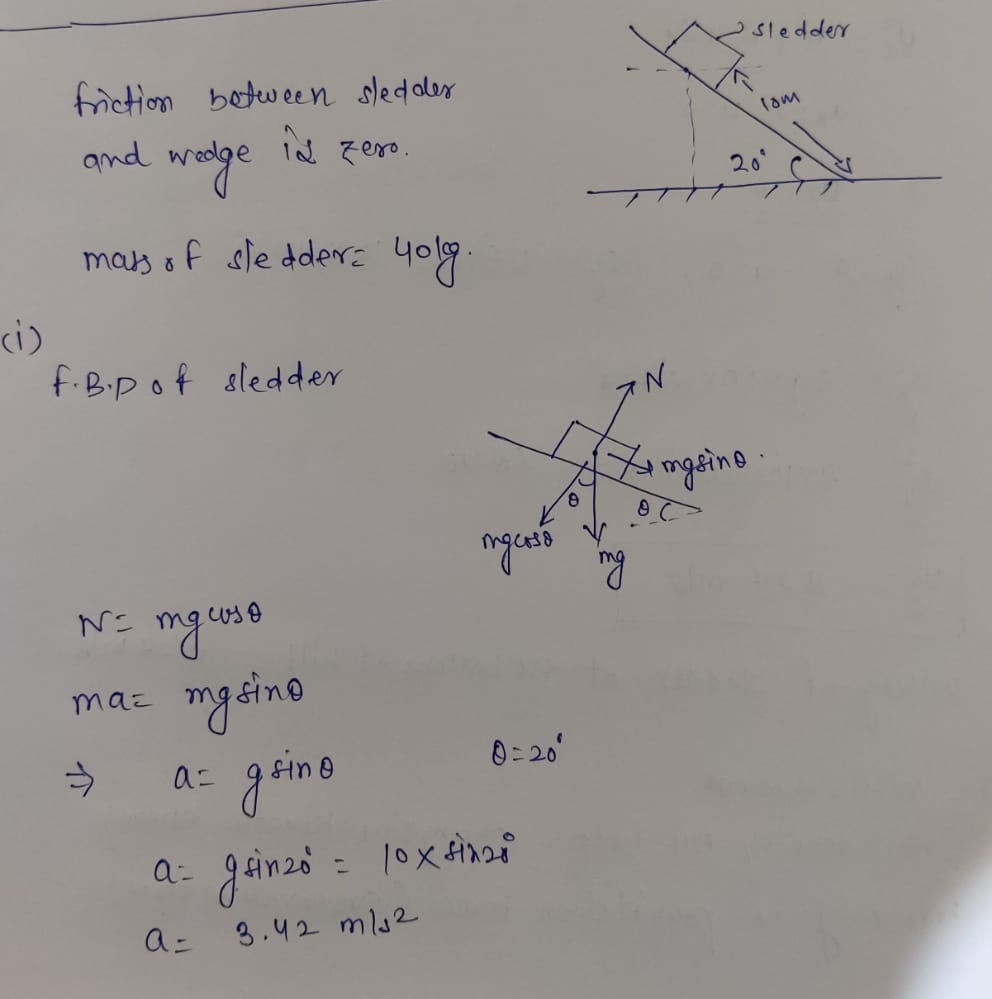A sledder with a total mass 40.0 kg (including the sled) slides down a 10.0m hill that is 20◦ from the horizontal. There is no friction. i. What is the acceleration of the sledder? ii. Using the equation of motion, what is the sledder’s velocity at the bottom of the hill? iii. Solve the same problem (ii) using conservation of mechanical energy.
A sledder with a total mass 40.0 kg (including the sled) slides down a 10.0m hill that is 20◦ from the horizontal. There is no friction. i. What is the acceleration of the sledder? ii. Using the equation of motion, what is the sledder’s velocity at the bottom of the hill? iii. Solve the same problem (ii) using conservation of mechanical energy.
Related questions
Question
A sledder with a total mass 40.0 kg (including the sled) slides down a 10.0m hill that is 20◦ from the horizontal. There is no friction.
i. What is the acceleration of the sledder?
ii. Using the equation of motion, what is the sledder’s velocity at the bottom of the hill?
iii. Solve the same problem (ii) using conservation of mechanical energy.

Transcribed Image Text:Title: Sliding Slope Diagram
This diagram illustrates a sled on an inclined plane. The key components of the diagram are as follows:
1. **Sled:** Represented as a rectangle labeled "Sled" near the top left corner.
2. **Inclined Plane:** The sled is on a sloped line, drawn at an angle to the horizontal ground. The length of this slope is marked as \( L = 10.0 \, \text{m} \).
3. **Angle of Inclination:** The slope forms an angle \(\theta\) of \(20^\circ\) with the horizontal baseline.
4. **Baseline:** A horizontal dashed line represents the ground level for reference.
This illustration is commonly used in physics to study forces and motion on an inclined plane. The angle and length are critical for calculating the components of gravitational force acting on the sled and analyzing friction, acceleration, and other dynamics involved in such scenarios.
Expert Solution
Step 1 FBD of sledder and acceleration

Step by step
Solved in 3 steps with 3 images
